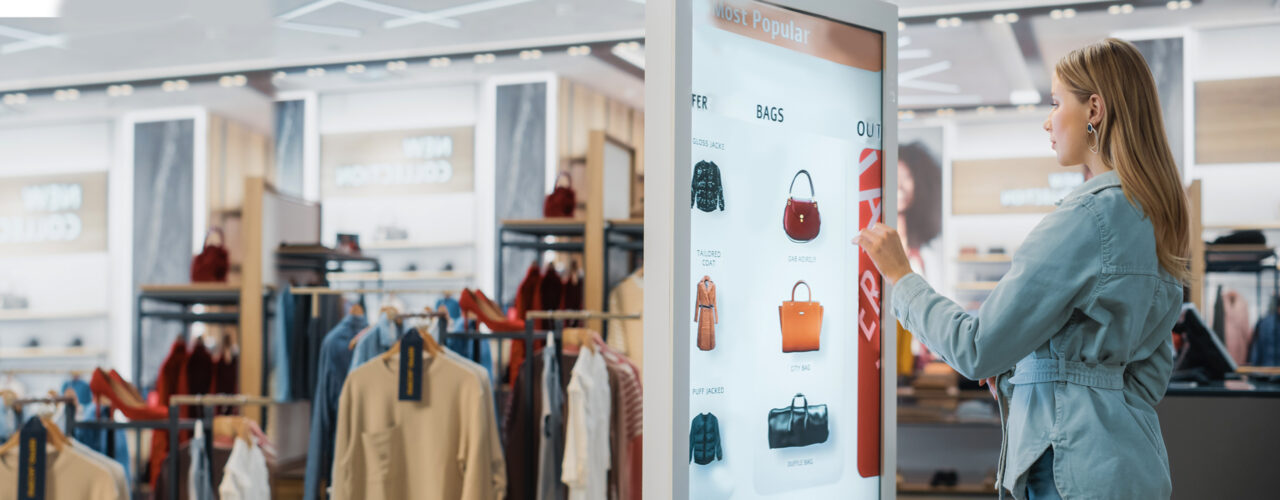In today’s rapidly evolving retail landscape, the lines between physical and digital shopping experiences are blurring. Enter “phygital” retail – a revolutionary approach that combines the best of both worlds to create seamless, engaging customer experiences. This hybrid commerce model is reshaping the way consumers interact with brands, offering convenience, personalization, and immersion like never before.
The Rise of Phygital Retail
Phygital retail is more than just a buzzword; it’s a response to changing consumer behaviors and expectations. With nearly 73% of retail consumers using multiple channels to shop, brands are recognizing the need to integrate their online and offline presence. This shift is driven by the desire for flexibility, convenience, and personalized experiences that cater to individual preferences.
Key Phygital Trends Transforming Retail
Click-and-Collect (BOPIS)
Buy Online, Pick Up In-Store (BOPIS) has seen a massive surge in popularity, with a 554% year-over-year increase in 2020. This phygital strategy allows customers to browse and purchase online while enjoying the immediacy of in-store pickup. Retailers like Target have embraced this trend with services like Drive Up and Order Pickup, providing a seamless bridge between digital convenience and physical fulfillment
Augmented Reality (AR) in Physical Stores
AR is revolutionizing the in-store experience by allowing customers to visualize products in new ways. For instance, IKEA’s Place app enables shoppers to see how furniture would look in their homes before making a purchase, blending the digital and physical shopping journey. This technology not only enhances customer confidence but also reduces returns and increases satisfaction.
Omnichannel Strategies
Successful phygital retail relies on a robust omnichannel approach. Brands like Nike are leading the way with their House of Innovation stores, offering customization options, on-demand sneaker creation, and digital checkout experiences. These initiatives create a cohesive brand experience across all touchpoints, driving engagement and fostering customer loyalty.
Implementing Phygital Solutions: Tips for Brands
- Leverage Existing Technology: Start by integrating digital experiences into your current infrastructure. Implement QR codes in-store to provide easy access to product information, reviews, and personalized promotions.
- Experiment with Pop-Up Stores: Test phygital strategies in temporary retail spaces. This allows you to gather valuable customer feedback and refine your approach before full-scale implementation.
- Invest in Staff Training: Equip your team with the skills to navigate both digital and physical aspects of your business. Ensure they can assist customers with online reservations, app usage, and in-store digital tools.
- Prioritize Data Integration: Implement a unified data management solution that provides a cohesive view of customer, sales, and product information across all channels. This enables personalized recommendations and seamless experiences.
- Embrace AI and Generative Technologies: Utilize AI to create hyper-personalized content and recommendations. For example, Albert Heijn’s Scan & Kook feature uses generative AI to provide personalized recipes based on a photo of ingredients.
- Focus on Seamless Transitions: Ensure customers can easily move between online and offline experiences. Allow them to start their journey on one channel and complete it on another without friction.
- Implement Interactive In-Store Technology: Introduce digital kiosks, smart mirrors, or IoT devices to enhance the physical shopping experience with digital convenience.
The Future of Phygital Retail
As we look ahead, the phygital retail landscape will continue to evolve. Expect to see more immersive experiences powered by VR and AR, hyper-personalization driven by AI, and smart stores that leverage IoT for real-time inventory management and customer interaction.
By embracing phygital strategies, retailers can create unique, engaging experiences that meet the diverse needs of modern consumers. The key lies in seamlessly blending the physical and digital realms, offering customers the flexibility to shop how, when, and where they prefer.
In this new era of retail, success belongs to those who can effectively bridge the gap between online and offline shopping, creating a unified brand experience that resonates with customers across all touchpoints. As the retail landscape continues to transform, phygital strategies will be essential for brands looking to thrive in an increasingly competitive market.

